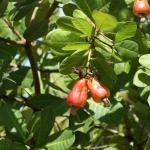Indoor plants are divided into those that need a lot of sun for life and proper development, and which, of course, prefer shade. As a rule, the latter are taken from exotic tropical forests, in which three layers of vegetation naturally arise and many flowers have adapted to living in partial shade and even in complete shade. To live, these plants usually need quite a lot of moisture, high temperature and a small amount of light.
Shade-loving flowers in our apartment will grow well in rooms that receive little light and in which, as a rule, soft twilight reigns. An example of such a room would be a bathroom without a window, which also has high humidity. If you decide to place a shade-loving plant in a well-lit room, you should, if possible, move it as far away from the window as possible, and the room can be further darkened, using, for example, blinds or roller shutters. In apartments there is always at least one room in which partial shade reigns almost all day long; if we want to plant flowers in it, then only shade-loving species will do.
How to evaluate the light intensity in a room?
You should take into account not only what side the room is on, but also any barriers outside the window that block light, such as trees, bushes or other buildings. It must be remembered that only through windows facing north do relatively little light enter the room. It is in such rooms that shade-loving plants should be placed. In rooms with windows facing other directions, you can expect intense sunlight for at least several hours a day. In this case, if you place a plant that loves twilight in such a room, you should remember to temporarily shade the room in the morning with windows facing south, or place the flower as far as possible from the window.
Shade-loving plants division
Flowers that prefer shade are usually divided into four groups. The first of these includes plants that develop better in cool twilight. This is, for example, ferns. In turn, they like rather cool partial shade cissus, ficus or ivy. Another group of plants does well in warmer partial shade. This category includes, for example, some palm trees. Such popular types as dieffenbachia, philodendron or dracaena loves, loves the warm shade. When purchasing shade-loving flowers, it is worth creating specific conditions that need to be provided to the flower, not only the required amount of light, but also the temperature.
The most popular plants for shaded areas
Most often in apartments, flowers are grown in pots that require a small amount of light:

This is a plant whose habitat is the tropics. Its distinctive feature is its spectacular decorative dark green leaves with a gray and silver pattern. Aglaonema will grow best in warm partial shade. It is necessary to ensure sufficiently high temperatures throughout the year. It should be borne in mind that the flower does not tolerate direct sunlight, due to the fact that it is adapted to life in partial shade and needs a lot of moisture. The plant requires fertile and well-drained soil for normal development. There are more than 50 species of Aglaonema, all native to tropical forests, where they form the ground cover.

It is one of the most famous indoor plants grown for its beautiful, thick and fleshy leaves. Dieffenbachia prefers warmth, but it must be grown in shadows. Therefore, you should not place it on a windowsill or other place where there are intense rays of light. Direct solar radiation is not used, but, on the contrary, is harmful. The plant loves abundant watering, but only during the growing season. From November it is necessary to limit watering. Usually, Dieffenbachia is not difficult to grow, she is quite unpretentious, which, combined with her spectacular appearance, makes her a frequent guest in many homes, even among less experienced flower lovers.

There are more than 600 species of this plant, whose habitat is tropical forests. In the forests she lives in partial shade and high humidity. This flower is perfect for growing in apartments where shade prevails most of the day. In order for plants to develop well, it is worth thinking about placing it in the kitchen, since this room is quite humid, thanks to the water vapor that flies in the air, the plant will be better hydrated. If it turns out that peperomia leaves turn yellow, this is a well-known sign indicating that it is placed in direct sunlight, which is harmful to it. Peperomia is decorated with small, fleshy and leathery leaves that look very cute.

This flower is suitable for poorly heated and shaded apartments at the same time. It is characterized by beautiful, not too large leaves, arranged in a rosette. This plant will develop well if we provide it with a fertile substrate from mixtures of compost and coarse sand. The flower does not need abundant watering; it requires fresh and humid air. Growing Saxifraga should not cause much trouble, even for inexperienced flower lovers.

As the name indicates, the plant has diamond-shaped leaves. One sheet consists of three large and two small. The plant looks very impressive and interesting. Moreover, it is not troublesome to grow. This cissus loves partial shade, but will benefit from some mild sun from time to time. This must be taken into account when choosing a place for it. You should remember to replant the plant annually in fertile soil, weekly watering and abundant fertilization with fertilizers specifically designed for this purpose. Cissus rhombifolia loves warmth, so it should be provided with it all year round.

It is a very popular flower in many homes with its distinctive appearance and long, narrow decorative leaves. The plant is native to Madagascar and because of this it grows best in warm but shaded areas. In addition, it requires a constantly moist substrate. Experienced breeders recommend frequent washing of its leaves, which provides an additional portion of the moisture that the flower prefers.

It is a popular flower from the fern family, which has a characteristic and distinctive appearance that sets it apart from other fern species. Namely, the plant is characterized by leaves that resemble elk antlers in their shape. This gives it a very impressive look. In nature, this plant species lives in Australia and New Guinea as an epiphyte growing on tree trunks and branches. Like every fern plant, this one too tolerates warm shade and grows best in areas that are not directly exposed to sunlight. For good development, you should provide a fairly high temperature, even up to 18 degrees Celsius, and a lot of moisture.

This is another species ideal for growing in shaded areas. Its name accurately conveys the appearance of its leaves, which are small, shiny and leathery. They look very decorative. Pellea is a flower from the fern family, although its appearance does not indicate this at all. This plant is very shade-loving, the optimal temperature in which it feels good is up to 25 degrees Celsius. Requires frequent watering, the higher the ambient temperature, the more water is required, so as not to overdo it with the amount of water, before watering the flower again, wait until the top layer of the substrate dries. It is best to spray the plant and at the same time water moderately.
As you can see, you have a large selection of shade-loving flowers. The choice of a specific type should be made based on what temperature you can provide for your flower.
The desire to find a plant for a north window or for a not very well-lit place in an apartment often causes significant difficulties for beginning gardeners. However, in today's conditions, flower lovers have enormous opportunities to choose indoor plants that are suitable for decorating their home interior, regardless of the degree of illumination. Below you can find the names and brief descriptions of the most popular indoor plants that grow in shade or partial shade.
What plants are classified as shade-loving and what are their characteristics?
In dark rooms or in corners of rooms where a minimum of sunlight penetrates, you can successfully grow unpretentious shade-loving plants.
In most cases, decorative deciduous plants predominate among shade-tolerant plants, the main decoration of which is their magnificent leaves. But shade-loving plants also include many flowering plants, vines, palms and ferns.
It is important to know! All ornamental plants have varying degrees of tolerance to lack of light. Some can live well in a fairly dark place (northern window sill or in the back of the apartment), while others need to be periodically (for example, depending on the season) moved to a bright window, or kept on an eastern or western window sill.
Video: shade-loving indoor plants - names and their features
The most popular shade-loving and shade-tolerant indoor plants and flowers: a list of names with descriptions and brief care tips
Most of the shade-loving and shade-tolerant plants are representatives of the tropical and subtropical forests of South America.
Chlorophytum
In many ways it is one of the most useful and popular indoor plants.

Chlorophytum is unpretentious, its care is very simple. It is necessary to water only after the soil is completely dry. On dry and hot days it responds well to spraying. This is a very hardy plant, able to tolerate both relatively cold rooms and warm rooms. The same can be said about lighting.
Video: caring for unpretentious and useful chlorophytum
Anthurium (Men's happiness)
One of the most attractive features of anthurium is its flower, which looks fake, as if made of plastic. But its leaves are also beautiful, dense and shiny.

Watering should be moderate; it is better to dry out the plant rather than overwater it. Loves being sprayed. It prefers brighter places without drafts and direct sunlight, but it can also grow in the shade, but in this case you will not get flowering, so it is advisable to keep it in partial shade.
Video: caring for anthurium at home
Aglaonema
This is a lush bush with incredibly attractive oblong green or colored leaves (the colors are very varied), which can reach a height of 60-70 centimeters.

Aglaonema is very unpretentious in care and almost does not need transplants. However, do not forget that it should be watered only after the soil has completely dried.

This shade-tolerant plant can grow both on a sunny windowsill (but always in diffused light) and in partial shade in the back of the room. Although for a very short time, you can place it in complete shade. It grows well in artificial light, especially necessary in winter.
Video: how to properly care for aglaonema
Fittonia
The color of the leaves of Fittonia excites the imagination: it can be either red or silver-green.

The main thing in caring for Fittonia is moderation in everything: watering, temperature and lighting. As for its shade tolerance, it is still better to keep it in partial shade on an eastern or western window, because in the southern window it will burn (if not shaded from direct sun better), and in the northern one it will begin to stretch out.

Video: caring for Fittonia - tips for gardeners
Ficus
Ficus leaves are usually dense and fleshy, although they can be small and thin. Moreover, they come in completely different colors - from light green to dark green, there are even variegated specimens.

Excellent for beginner gardeners due to its unpretentiousness. Small-leaved ficuses must be sprayed periodically, large-leaved ones must be wiped with a damp cloth or cloth. An important point: ficus does not like to constantly move from place to place, so it is better to immediately choose a place for it on a windowsill or in a small depth of the room, protected from direct sunlight. It should be noted that ficus plants with dense and dark leaves (large-leaved) are better suited to an eastern or western window sill, while varieties with light foliage require an exceptionally well-lit southern window, and they even need additional lighting in winter.

Video: proper care of ficus
Crassula (Money tree)
Who doesn't know what a money tree looks like? Perhaps not everyone knows that its correct name is “Crassula”.

Do not neglect the fact that the money tree does not like abundant and frequent watering, since for this plant, waterlogging is much worse than drying out the soil. At the same time, this flower does not require frequent transplants. Crassula, like all succulents, loves light, but not direct sunlight, but diffused and soft ones. It is optimal to place it on the eastern windowsill. In summer, it is recommended to move the plant to a shadier place (but not in full shade) to avoid damaging the delicate leaves of the money tree.
Video: caring for the money tree (crassula)
Tradescantia
It has bright green stems that cascade down in a pretty way. The leaves are typically green or purple, lance-shaped with silver or light green stripes, and may be hairy.

The plant does not create problems when grown, but it should be borne in mind that it is quite moisture-loving. The leaves should be sprayed periodically, except for the pubescent varieties of Tradescantia.

Prefers sufficiently lit places, but always with protection from direct rays, especially in summer. It can grow near windows facing west or east; in principle, it can also be tolerated on a northern window sill.
Dracaena
This evergreen plant, if you are very lucky, will even be able to please you with fragrant white flowers.
It’s very simple - this is the most unpretentious shade-loving plant to care for, which is only contraindicated in drafts. Just note that over time, dracaena leaves age and begin to fall off. However, there is no need to worry, this is an absolutely normal phenomenon and does not indicate insufficient care.

This chiseled, graceful flower is perfect for decorating the hallway or living room of your home or apartment.
Video: caring for dracaena at home
Spathiphyllum (Women's happiness)
This plant has not only shiny dark green dense foliage, but also indescribably beautiful sail-shaped flowers.

Due to its unpretentiousness, spathiphyllum is one of the most popular indoor flowers, because it is able to grow successfully in both somewhat darkened and bright rooms. So, in summer it is optimal to keep it on a northern window; in other periods it is still better to place it on sunnier window sills, but away from direct sunlight. The main thing is to choose a relatively cool place in the apartment for growing it and water it regularly.
Calathea
It delights with large dark green foliage with light or burgundy stripes. Calathea blooms with spectacular purple or white flowers, but, as a rule, rather reluctantly.

Interesting! As the sun sets, the leaves begin to stretch upward, which is why calathea is called a prayer flower.

This heat-loving plant does not tolerate drafts; it likes fairly moderate temperatures and high humidity. For normal growth of calathea, regular spraying is required. It is optimal to keep the flower on the western or eastern window, although you can also place it on the northern window. But in any case, it should be hidden from direct sunlight.
Video: home care for calathea
Other shade-loving and shade-tolerant indoor plants
The following are less popular indoor plants, but capable of growing in the shade and delighting their owners. Naturally, flowers should be located on sunny windowsills, but with obligatory shading, maximum on eastern or western ones. But the northern windows will not suit them at all.
Decorative foliage plants
Aspidistra

Aucuba
Maranta

Palms, vines and climbing plants
Monstera

Nephrolepis

Maidenhair

Pteris Cretan

Rapis

Hamedorea

Cordilina

Philodendron

Indoor ivy (Hedera)

Scindapsus

Cissus

Flowering plants
Saintpaulias (violets)

Clivia

Begonia

Fuchsia

Cyclamen

Thus, shade-loving and shade-tolerant include indoor plants that can grow quite successfully with a lack of light (the majority of them) or even in the absence of it (there are much fewer of them).
Note! If you do not agree with the presented list or would like to add another name for a shade-loving plant to it, then write in the comments!
Video: indoor plants for dark rooms
In contact with
Sunlight is a source of energy for plants, but indoor flowers in pots do not always receive their share of sunlight in sufficient quantities. Yes, most houseplants are recommended to be placed on a windowsill or even near a window in a well-lit place, but there are indoor flowers that will survive and delight us with their beauty in the darkest corners of the house.
These plant varieties, which will be discussed below, are not particularly bothered by the lack of sunlight - they feel quite good in low light and even in partial shade. True, the beauty of such “dark-loving” plants is mainly not in bright colors, but in wonderful leaves, which, in addition, purify the air of the apartment and other rooms especially well.
House plants growing in the dark
Calathea

The patterned leaves make this plant a welcome addition to any room, but keep in mind that direct sunlight is not recommended. The best option for calathea is partial shade.
Dieffenbachia

Diffused light works best for this plant. It's best to keep it behind a curtain. The plant is especially beautiful in spring and summer, when light, delicate leaves appear in the center.
Dracaena marginata

This is a real piece of the tropics on the office desk. But keep the plant away from direct sunlight - it can damage them. The plant loves shade.
Chlorophytum crested

A very unpretentious plant, therefore quite popular. It can go without the sun for a long time and at the same time perfectly purifies the air.
Gelksina

A plant with tiny delicate leaves looks beautiful in hanging planters and in pots next to tall plants. But be careful: do not plant it near low plants - helxina can “strangle” them. You are required to water and spray frequently.
Ferns

More than 2,000 species of ferns are suitable for growing at home. These tropical plants are willing to stay in the shade, but they will not tolerate dry air. They need frequent spraying of leaves, especially during the heating season.
Philodendron cordate

Perhaps this is the favorite plant of many gardeners. Feels good in the shade and perfectly purifies the air. Occasionally it is necessary to pinch so that it does not stretch too long.
Neoregelia

A tropical plant that thrives when receiving only artificial light. Thrives in damp conditions, such as bathrooms.
Spathiphyllum

If you often forget to water your plants and almost no sunlight gets into the room, you can choose such a beautiful and unpretentious flower.
Aglaonema

One of the best options for a room with low light. Ideal for beginner gardeners.
Sansevieria three-lane

A plant that requires virtually no care. Light affects its growth, but it lives well in the dark.
Aspidistra tall

This plant tolerates shade, heat and cold well. But it will take a little patience as it grows very slowly.
It should be noted that in addition to their “main function” - purifying the air in the house, houseplants often perform other useful “responsibilities”. In addition to decorating the house and improving mood, some of the plants have a noticeable effect on the well-being of the owners. Some indoor plants calm and even improve sleep for residents. What plants are useful to have in the house are written below. Some of them have already been presented in the first part of the post.
5 indoor plants that will help you sleep better
Palm (Areca)
This plant cleanses the air of toxins and carbon dioxide. It also releases moisture into the air, which makes it especially useful during the heating season, when the indoor air is especially dry.

Aloe (Vera)
This plant, in addition to its medicinal properties, reduces the content of formaldehyde and other harmful substances in the air. At night, it releases oxygen, which is usually unusual for other plants. In addition, the phytoncides released by aloe have a beneficial effect on the body and increase immunity.

Ficus (Benjamina)
One of the record holders for air purification. Removes from the air more than 70% of benzene, ammonia, toluene and other harmful impurities that can be released from low-quality synthetic coatings, linoleum and chipboard. It processes all these compounds and also destroys half of all existing microbes. It has a beneficial effect on sleep and also looks good in the bedroom.

Sansevieria (Trifasciata)
This plant has a good effect on the respiratory system and immunity. If there is this plant in the house, then the people living in it suffer less from headaches and pressure surges associated with changing weather. At night, during sleep, it also releases oxygen and remains pleasantly cool.

Fern (Boston)
The beneficial properties of fern lie in its valuable chemical composition. The plant is rich in essential oils, flavonoids and other substances. Therefore, this flower has a beneficial effect on the functioning of the nervous system and helps cope with stress.

If you find an error, please highlight a piece of text and click Ctrl+Enter.
Not every room in a house or apartment is well lit. The sun rarely shines into the room, whose windows face north. It is quite difficult to create coziness and complement the design with indoor plants in such conditions. In this case, you can choose shade-tolerant indoor plants that naturally grow in shaded or shady places. Their choice must be approached very carefully, selecting only unpretentious specimens that do not require a lot of light for their growth.
Decorative foliage shade-loving indoor plants
Plants with beautiful leaves that grow well in the shade can decorate any dark corner in the apartment, thereby complementing the interior of the room. The most unpretentious of them include:

Shade-tolerant large plants and palm plants
Any corner of a large spacious room can be decorated using large, large plants who love shade. They will look great alone or surrounded by other unpretentious flowers.
- Monstera is a large plant that is a vine. Its large carved leaves in indoor conditions reach a length of 30 cm. They can be either green or variegated. The leaves of a young plant are whole, and only over time they grow leathery and carved. Monstera can reach several meters in height, so its aerial roots need support. Tropical vines decorate public institutions and residential buildings with limited light.
- Dracaena is a tree-like indoor plant with a luxurious crown of wide or thin leaves. Thanks to its unusual red sap, the plant acquired a second name - “dragon tree”. In nature, dracaena grows up to 10 meters, but at home it grows very slowly. Loves partial shade, but grows well in bright rooms. Does not like overwatering and responds well to spraying with water at room temperature.
- Hamedorea is a slow-growing palm that loves shade. Many people know the plant by its appearance, and it is very popular among gardeners. To obtain beautiful spreading leaves, chamedorea should be washed regularly in the shower and protected from direct sunlight.
- Ficus trees include a large number of species. They can have large and small leaves of green or variegated color. The most famous ficus is the rubber plant. These shade-loving flowers grow quickly and look good in winter gardens, spacious apartments and office spaces. Ficuses love spraying, plenty of moisture and partial shade. Their large leaves must be regularly wiped with a soft sponge soaked in water.
Flowering shade-loving plants
Oddly enough, some beautifully flowering plants also grow well in the shade, decorating dimly lit rooms with their flowers. They can be grown next to the north windows or in the corner of a room with artificial lighting.

Climbing shade-tolerant plants
 Any wall, bookcase, closet or flower stand in the apartment can be decorated using lianas, which love and grow well in shade and partial shade.
Any wall, bookcase, closet or flower stand in the apartment can be decorated using lianas, which love and grow well in shade and partial shade.
Scindapsus. The climbing plant is distinguished by leathery, simple oval leaves. Its green leaf plates are decorated with white and yellow streaks. In indoor conditions, scindapsus grows very quickly. To make the vine lush and look beautiful, it is recommended to trim it periodically. Tolerates partial shade well, loves high humidity and abundant watering in the summer.
Ivy. A houseplant with star-shaped green or variegated leaves is a favorite of all gardeners. The shade-tolerant flower can grow and entwine any support in a short time. It can be grown in a hanging planter or spread over a moss support and shaped into a tree.
Syngonium. There are many types of this indoor plant, but green-leaved syngonium grows well in the shade. The beautiful liana is distinguished by succulent leaves, which, when closed, form a cascade capable of decorating any room. It grows quickly and, if supported, can form into a tree. Loves regular watering and spraying.
 creeping calissia. An ampelous plant with creeping stems and ovoid, velvety dark green leaves can be grown in hanging flowerpots. Because it grows quickly and creates a carpet of green, it is often potted alongside larger plants or used to fill empty spaces in a composition.
creeping calissia. An ampelous plant with creeping stems and ovoid, velvety dark green leaves can be grown in hanging flowerpots. Because it grows quickly and creates a carpet of green, it is often potted alongside larger plants or used to fill empty spaces in a composition.
Tradescantia. The well-known herbaceous plant is distinguished by straight creeping shoots, lancet-shaped, ovoid, elliptical alternate leaves and axillary white inflorescences. To get a thick hanging plant, Tradescantia must be pinched periodically. An unpretentious indoor flower can be grown in the shade, placed on a cabinet, shelf or planted in a hanging pot.
As can be seen from the article, even for dark rooms You can choose a large or small, flowering or decorative foliage plant. By paying a little attention to it, you can admire your “green friend” all year round.
Shade-loving plants for the home






There are not so many flowers suitable for growing on northern windows - this is the opinion of most home flora lovers. And they are not very wrong. Indeed, few of the popular indoor plants are capable of blooming on northern windows. However, there is a huge variety of decorative deciduous crops that are in no way inferior in beauty to flowers, and sometimes even surpass them.
For a room with windows facing north - a room, a hall or a study - it is quite possible to select plants not only for the window sill, but also those that will feel good away from the window. Some of them will be located on the floor in flowerpots, others will occupy the walls and space under the ceiling. Well, the windowsill will go to those who are least shade-tolerant.
If you start “populating” the room with green pets from the farthest corner, gradually moving towards the windows, the plants will be arranged approximately as follows:
Aspidistra is a member of the lily family, which easily acclimatizes in poorly lit places. This flower can be safely placed in the farthest corner of the northern room. Even if there are no windows at all, the plant will have enough artificial lighting.
There are forms of aspidistra with striped leaves. They are also shade-tolerant, but without light they lose their variegated color and become ordinary, green.
The rhizome of aspidistra is thick, half immersed in the ground, reminiscent of the back of a snake. Because of it, the plant received its name, which was originally an exclamation of “snakes there!” Moisture accumulates in the rhizome, so the flower is able to tolerate several missed waterings.
The plant is undemanding to soil and moisture. The only weakness of the aspidistra is that it does not tolerate dust, so its large and wide leaves, growing directly from the rhizome, must be regularly wiped or washed in the shower.
Aspidistra
Subshrub, rarely found in home collections. Aucuba is a relative of the common cotoneaster and is also unpretentious. Extremely shade-tolerant, in nature it lives where no other plants can withstand.
Cultivated varieties have showy dark green leaves with yellow “splashes.” Aucuba can be an excellent office plant, as it thrives in dry, air-conditioned air.
 Aucuba
Aucuba Large leaves are decorated with silver veins and are always turned towards the light. Aglaonema will grow in the depths of the northern room, while looking bright and stylish. The plant is thermophilic and demanding of soil, does not tolerate drafts. It is recommended to grow Aglaonema for 5-7 years, and then change it, propagating it from apical cuttings. The plant is suitable for the kitchen, as it absorbs toxins released during the operation of heating equipment (vapors of formaldehyde, benzene, etc.).
 Aglaonema
Aglaonema 4. Sansevieria
Pike tail, also known as Mother-in-law's tongue, was very popular in Soviet institutions. Sansevieria (sansevieria) will grow where it is placed - in deep shade or in the sun, it does not care about tobacco smoke or drafts. In good conditions it grows quickly and forms a dense “picket fence”; when the soil is depleted, growth slows down and almost stops completely. Sansevieria is a Spartan among indoor flowers, and looks accordingly - strict lines and “camouflage” colors.
It is rarely found in home flower beds these days, apparently due to its ascetic appearance. However, breeders have developed many new varieties of sansevieria that deserve attention. A group of different types of sansevieria will look interesting - classic tall ones along with rosette, compact and variegated ones. The pike tail with cylindrical leaves looks exotic. The latest fashion trend is sansevieria cylindrical, braided.
 Sansevieria
Sansevieria 5. Scindapsus
He will willingly master the space under the ceiling. In nature, scindapsus is a creeping plant; domestic species are tied to a support, like a vine. Grows up to 5 meters or more in length. Lack of lighting is not a problem for scindapsus. He loves warm air and does not tolerate drafts.
The plant requires light fertile soil and fertilizer once a month. Like many members of the araceae family, scindapsus is poisonous. Therefore, it is advisable to place the plant in a place where children and pets cannot reach it.
The most spectacular are the variegated forms of golden scindapsus, with yellow and white strokes. A lack of light does not harm the color of the leaves. Scindapsus can live a long time, 20 years or more.
 Scindapsus
Scindapsus 6. Ferns
In nature, ferns live under the canopy of dense forests, in a humid environment. House ferns love shade and partial shade, light, slightly acidic soils and moist air. Plants with graceful feathery fronds will fit into any design.
Traditionally, fern is considered an office plant. In a small apartment, spreading nephrolepis will take up too much space, but there are also compact varieties of ferns. For example, it is also Venus's hair - an excellent hanging plant with a flowing lace of small leaves. The tender leaves of the adiantum cannot tolerate the sun even in small doses.
Ferns are quite demanding regarding air and soil humidity. In dry air, their “feathers” become coarser, become covered with brown spots and eventually die off. The soil under the fern can be covered with a layer of moss - it will protect the soil from drying out, and the appearance of the plant will become more original. Ferns do not have a rest period and prefer uniform temperatures and the same care throughout the year.
Like reeds, fern is considered a plant with questionable bioenergy. However, more often than not, everything is explained more simply - allergies to fern spores, as well as to reed fluff, are not uncommon.
 Fern
Fern Beautiful in itself. Among other plants, the graceful contours of Zamioculcas are lost. In addition, the flower is distinguished by its uncooperative character: it either oppresses neighbors of other species, or withers itself. It tolerates only representatives of its own species and some palm trees (bocarnea, chamedorea). Therefore, it is best to give the dollar tree its own individual space. By the way, Feng Shui recommends the same thing.
According to signs, a pair of same-aged zamioculcas in identical pots on both sides of the door is a powerful talisman that attracts wealth. Signs are signs, but the fact that this is an original interior detail is one hundred percent true.
Zamioculcas can hardly be called a shade-loving plant. It prefers bright, diffused light, but tolerates shade, only slowing down its growth. If you want to grow a large specimen of Zamioculcas, it is advisable to place it no further than two meters from the window, or organize a “shift method”, changing plants once a month.
When moving, it is not recommended to rotate plants relative to the cardinal directions. To avoid accidentally turning the pot the “wrong way,” it is better to mark the north direction on it in advance.
 Zamioculcas
Zamioculcas Majestic is the name of one of the types of indoor anthurium. Anthuriums look very impressive and can decorate the office of a serious executive or the hall of a large company. To ensure that the original round leaves do not lose their decorative properties, the anthurium must be fertilized in a timely manner with a complex for variegated plants.
If the anthurium is placed closer to the window, it will bloom with spectacular flowers that have only one petal, but are very large and bright.
Anthurium acquired the nickname “male happiness”, since even among the ancient Greeks it was considered a talisman of masculinity. Among the plants there is also “women’s happiness” - the graceful spathiphyllum. Both “happiness” get along well next to each other and complement each other.
Spathiphyllum is a fashionable, but still rare plant in homes; it requires approximately the same conditions as anthurium. Spathiphyllum blooms with white flowers resembling calla lilies.
 Anthurium
Anthurium 9. Poinsettia
It is not for nothing that the most beautiful milkweed was awarded such a title. In Soviet times, poinsettia was called Scarlet Sails, and the name Christmas Star came from Europe. Poinsettia bracts are colored in different shades of red, from pink to deep purple, depending on the variety. There are forms with white and variegated “flowers,” as well as double ones, reminiscent of roses. In its homeland, Mexican spurge reaches a height of three meters, but tolerates pruning and formation into a compact bush.
Poinsettia should be trimmed carefully - the plant's juice is not poisonous, but quite caustic.
The Christmas Star may well live near the northern windows in a cool (15-20 ° C) room. To get poinsettias to bloom by Christmas, you should take care to artificially reduce daylight hours. From mid-November, the plant should be illuminated no more than 12 hours a day during the month. Artificial light is also undesirable - the flower can be covered with a dark bag or screen.
 Poinsettia
Poinsettia 10. Orchid
Northern window sills can be turned into a paradise for orchids. The butterfly flower, phalaenopsis, is the most unpretentious of them. There are a great many varieties of phalaenopsis.
In the first stages, it is better to buy substrate for orchids in the store. Special fertilizers are also sold there.
To prevent the orchids on the north window from being too dark, you can use a little trick - attach mirrors, for example, from an old dressing table, or foil, to both sides of the window opening. A homemade reflector will at least double the amount of diffused light.
Blooming phalaenopsis can delight not only their owners. Recently, it has been very fashionable to give fresh flowers in pots. An orchid grown with your own hands is a wonderful gift for any holiday.
 Orchid
Orchid "Out of competition." About those plants that are not included in the list
Of course, there are not ten shade-tolerant plants, but much more. The above species are either particularly unpretentious, like aspidistra or sansevieria, or decorative, like poinsettia. One should also take into account such factors as the fashion for indoor flowers.
Plants with a thickened trunk are in trend today. Among the shade-tolerant ones we can call bent cycad, also known as cycas- a plant with luxurious flowing feathery leaves. A large evergreen tree, reminiscent of a palm tree, but more squat. An ideal plant for hallways and spacious rooms. The spectacular cycad can be planted as a single plant or given a central place in groups.
It is quite possible that in a few years the peak of popularity will be (bamboo palm). This is the most shade-tolerant of palm trees. It looks very elegant and is suitable for both the living room and the office.
As a rule, shade-loving plants have large dark leaves. For contrast, you can place a small-leaved plant next to it. selaginella(house club moss) or unpretentious saltroly. Forming a curly carpet, it will look good as a ground cover plant in pots with large plants.
Ficus- a timeless classic. The ficus and the canary are the personification of a quiet and peaceful life in a small town of pre-revolutionary times. The Bengal ficus became a symbol of the family nest - planted once, it passed from generation to generation. In nature, ficus trees live for 500 years or more, and at home - as long as there is someone to care for them.
Ficus Benjamin has won the love and recognition of flower growers - the plant does not require special lighting and decorates any interior. At the same time, it purifies the air in the room, including the smell of tobacco. Ficuses come in different varieties - tree-like and ampelous, liana-like and dwarf. Through the efforts of breeders, variegated varieties of ficus have been developed. Absolutely all ficus trees are suitable for growing near northern windows.
they do not need advertising - their decorative leafy forms can be found in almost every home and institution. If you want to diversify your collection, you can pay attention to new hybrids, which are produced annually in dozens and even hundreds.
Monstera as if created for offices. Its bizarrely shaped leaves will add variety to a strict environment (and will hide the solitaire monitor from the eyes of the authorities...). It’s so nice to come out of the summer heat into a gloomy and cool hall - and see there a fountain or micro-reservoir surrounded by monstera thickets...





















